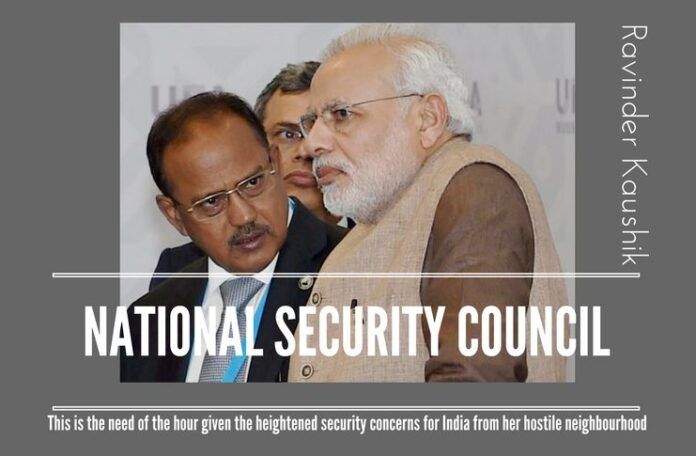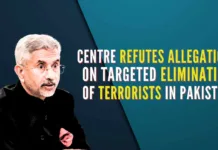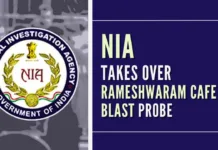
PM needs to create a National Security Council in the PMO with NSA, RAW, IB, ED, NIA, CBI represented. Too many things happening. Needs team – Dr. Subramanian Swamy
In an era of growing security concerns globally, India is facing grave security threats from far too many quarters and senior BJP leader Dr. Swamy had expressed his concern with a tweet asking for the creation of a National Security Council on Sep 7th 2017.
This post outlines the blueprint for setting up such a National Security Council.
The establishment of Research and Analysis Wing (RAW) was the first major post-independence initiative which dealt with intelligence & security management system in India. It was the then Prime Minister Indira Gandhi, who tasked IPS Rameshwar Nath Kao, to submit the blueprint of an effective external intelligence agency that can – engage in counter-terrorism, promote counter-proliferation, gather foreign intelligence and advise Indian policy-makers on foreign strategic interests. Kao worked very hard, thoroughly researched various intelligence agencies like CIA, MOSSAD, KGB while working on the blueprint of the first ever specialised external intelligence agency. RAW came into being in 1968 with Kao himself as it’s first Director.
Currently serving Intelligence Bureau (IB) was created by the British. Disastrous failures of IB in India-China, India-Pak wars created huge pressure on Government headed by Indira Gandhi to bifurcate the external and internal intelligence in two separate agencies. IB was formed to involve in domestic intelligence gathering, while the RAW was created as India’s primary external intelligence agency.
Another major change was formulated by Prime Minister Atal Bihari Vajpayee when he established the National Security Council (NSC) in 1999. The role of the existing Joint Intelligence Committee was merged with the NSC. It is an executive government agency tasked with advising the Prime Minister on matters of national security & strategic interests.
The NSC is the apex body of the three-layered structure of the current national security management system in India. Besides the National Security Advisor (NSA), The Deputy National Security Advisor (DNSA), NSC has the Ministers of Defence, External Affairs, Home, Finance among its members. The other two layers are the Strategic Policy Group (SPG), and the National Security Advisory Board (NSAB).
The National Security Advisory Board consists of experts outside the Government with expertise in external security, strategic analysis, foreign affairs, defence, the armed forces, internal security, science and technology and economics.
The Strategic Policy Group is the base level of the three layered structure of the National Security Council. It is the centre of the decision-making apparatus of the NSC. Its members are Secretary-level officials from various ministries.
However at the base layer of this very complex 3-layered council, officials from different agencies & ministries are inducted but still it doesn’t ensure in-time action by information sharing to all agencies on urgent basis via single mechanism. Since long time voices are raised by experts to establish strong multi-agency executive council direct under Prime Minister’s office.
There are strong grounds favouring the demand. Peaceful protests like those of the Jats and Jallikattu suddenly became violent due to lack of intelligence shared with all concerned authorities. ISI is alleged to have played a role to instigate the planned violence. The attack on Amarnath pilgrimage yatris could have been avoided if intelligence had been shared with all agencies. Such a multi-agency council would not only ensure counter-terrorism measures but would also ensure timely investigations in cross-border crimes like the murder of Sunanda Pushkar. An endless list of incidents could have been avoided if confirmed intelligence was shared to all agencies. The central and many state intelligence agencies failed to arrest infiltration of Rohingya muslims due to lack of a foolproof mechanism, and now a national-wide scanner has become necessary to handle the very sensitive situation. The clear reason is lack of information; otherwise competent officials would have ensured the dismantling of such anti-India activities. Apart from the current composition of the NSG, all state DGPs and Chiefs of Army, Navy and Air Staff must be part of the multi-agency council.
Now, either SPG of the current NSC is to be restructured thoroughly to function directly from the Prime Minister’s Office or a new executive National Security Council should be formed to set new milestones in National Security Management System.











Kudos, my darling friend Ravi
–
Divya Garg, President,
OFBJP Sweden
Absolutely!
We need an Executive NSC as well as an specialised council for Social Media too. Anti-India elements on SM need to be crushed under boots
Great suggestion on valid grounds with stated facts . I wish PM take your suggestion and act on it soon 🙂
Keep it up, Ravinder
Seems a good suggestion